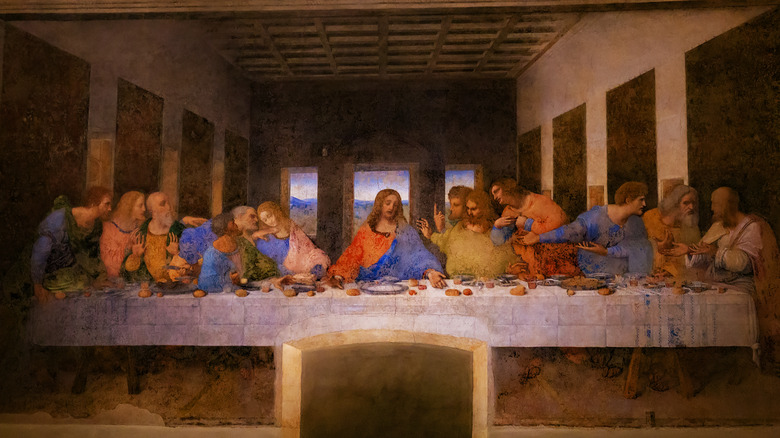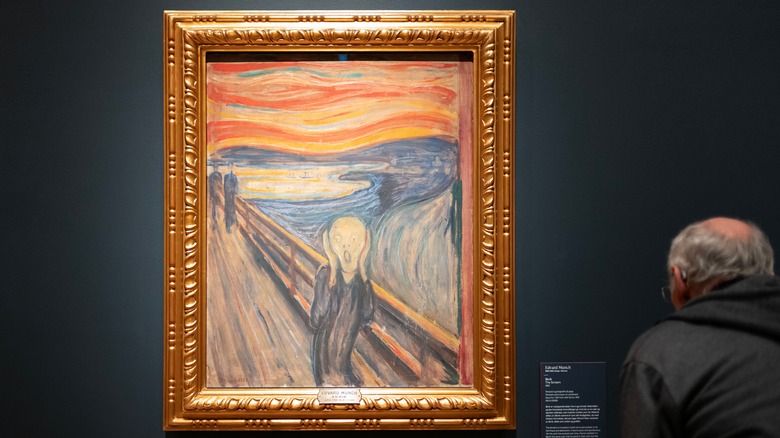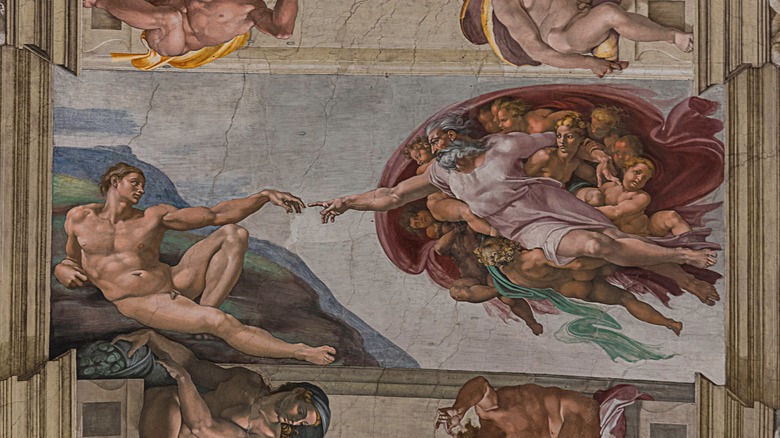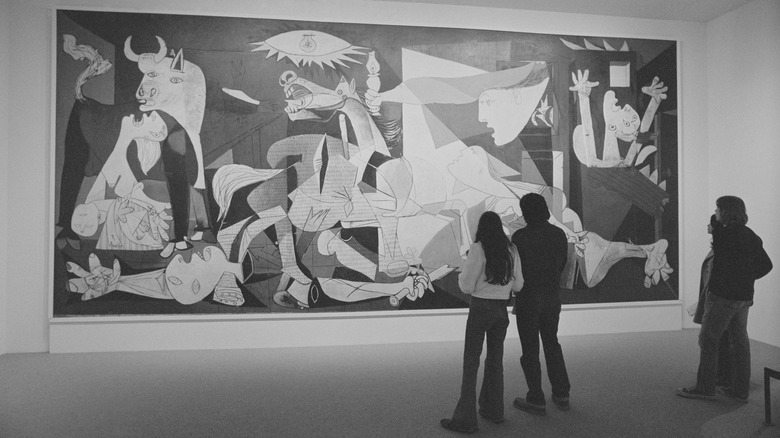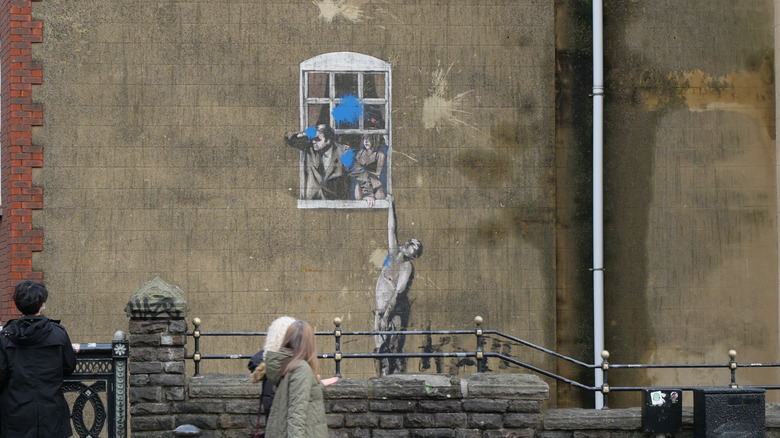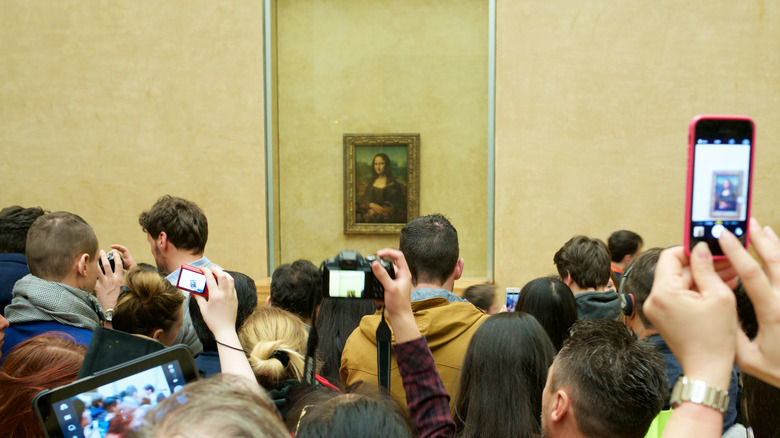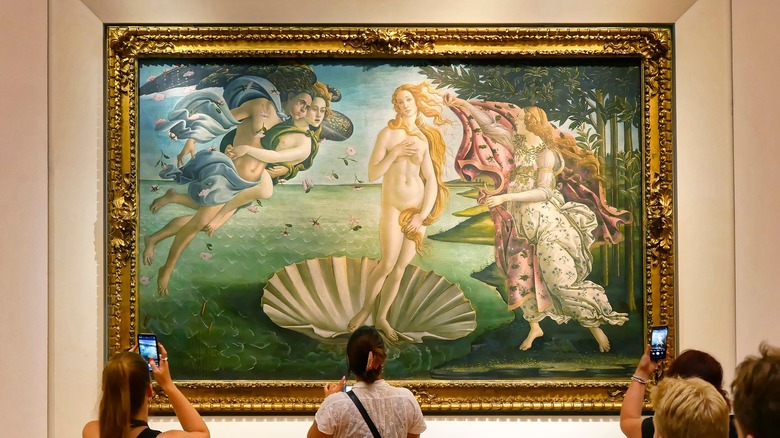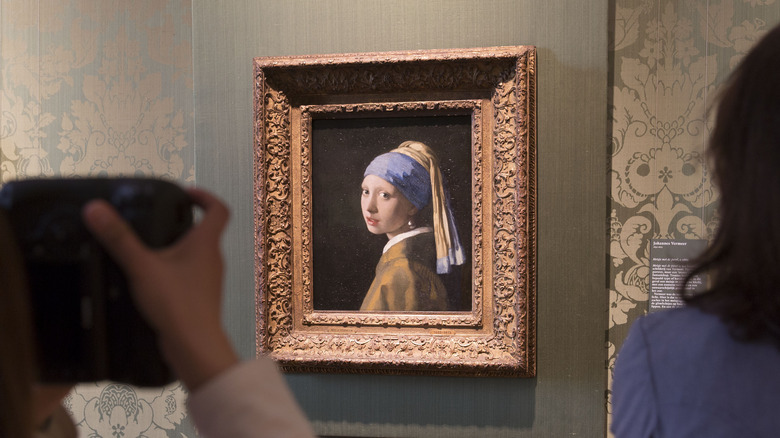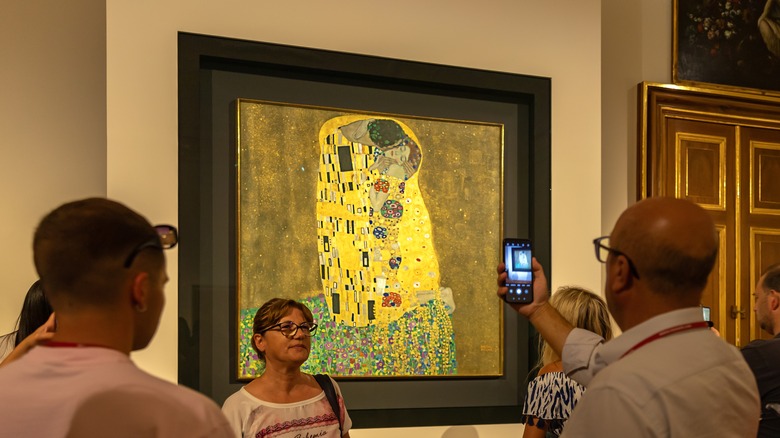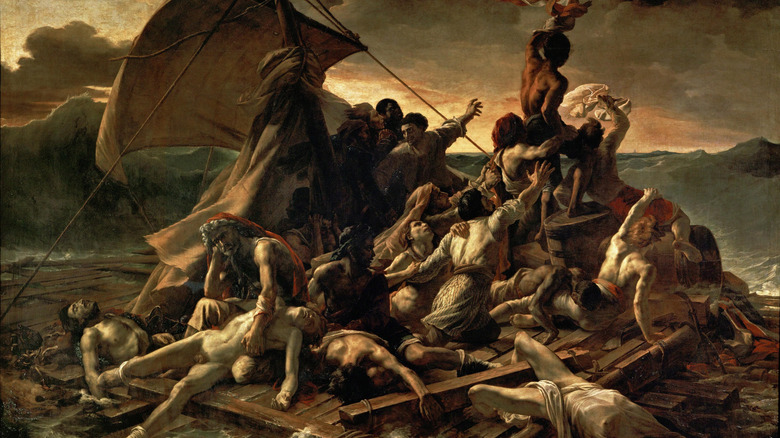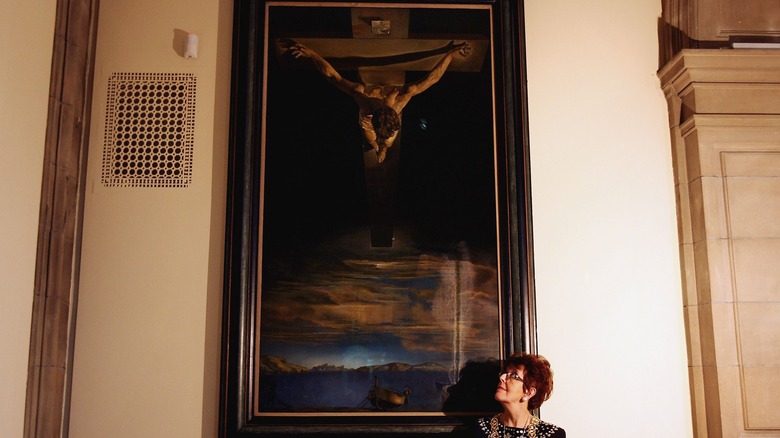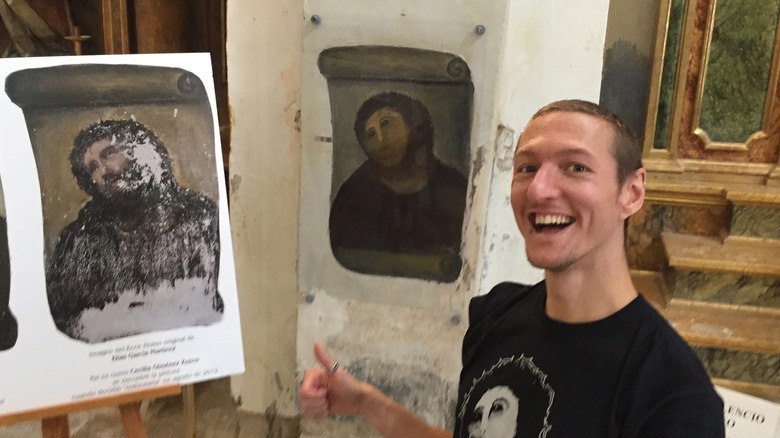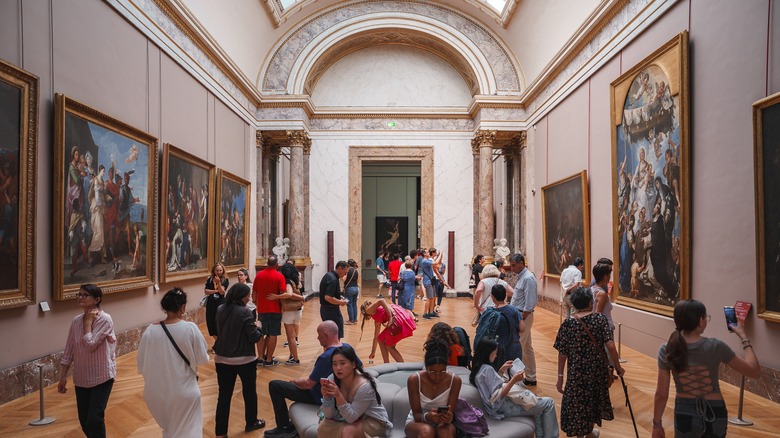Spectacular Paintings Around Europe To Add To Your Art Bucket List, According To Reviews
Why does there appear to be such a disproportionate amount of famous masterpieces painted in Europe? From da Vinci to Picasso, Monet to Van Gogh, what drove these influential artists to brush their strokes further than other regions? Perhaps it's the rich artistic traditions whereby Europe placed much importance upon developing aesthetically pleasing craft for national identity. Or, maybe it was those periods of economic advancements that granted the painters extra time and technology to put new materials to the test. Or, it's possibly a result of cultural diversity. Europe covered a broad spectrum of perceptions while devoting considerable resources to plundering the rest of the world.
Whatever the case, such a mass of talent demanded localized points for the public to enjoy. Consequently, the art gallery industry flourished, leading to an overload of establishments accommodating these magnificent pieces. There are so many galleries, in fact, that you'll be lucky to find two famous paintings in the same location. But never fear! We'll guide you to essential stops for your next European trip, and each artwork was chosen for its popularity based on Tripadvisor reviews, meaning you'll already recognize most, if not all, of the entries mentioned.
The Last Supper by Leonardo da Vinci (Milan, Italy)
Painting Biblical stories to perfection is no easy feat, but this Leonardo da Vinci achievement is so remarkable that it has become synonymous with "The Last Supper" itself. In true Leo fashion, every detail on display is intentional, with their hand gestures telling elaborate stories alone. Ever notice how Peter is holding a knife? This foreshadows John 18:10, where he cuts off the ear of Malchus. Or how about Judas clutching the small bag of silver he was paid with to betray his leader? And, of course, there's Jesus himself, whose one hand reaches for the bread (his body), while his other upward, open palm signals to the wine (his blood).
Despite da Vinci's artistic expertise, his experimentation got the better of him, and endless problems have plagued this late 1400s masterpiece. His unorthodox choice of slowly layering tempera paint directly upon the Santa Maria delle Grazie wall proved a mistake, and the work has rapidly deteriorated over the centuries. Numerous attempts at restorations have transpired, but much of the damage is irreversible, such as the disciple Simon's face (far right), which is altogether lost. For this reason, we must consider ourselves fortunate to still have access to this piece. On Tripadvisor, 13,777 reviews give experiencing the masterpiece a 4.5-star rating, and art lovers should not pass up on the opportunity to see it while they still can.
The Scream by Edvard Munch (Oslo, Norway)
"The Scream" (1893) is often considered the most iconic representative of anxiety in history, inspiring artists from Andy Warhol to the killer's mask in the horror franchise "Scream." But many people don't realize that there are not one but four versions of this piece in existence. Thankfully, two have not strayed far from Edvard Munch's hometown of Olso: one can be found in his own Munch Museum, while the other is in Norway's National Gallery. However, the latter is more notable due to its faint pencil inscription, "Kan kun være malet af en gal Mand!" translating to "Could only have been painted by a madman!" On Tripadvisor, 3,356 reviewers gave the National Gallery experience a 4.5-star rating.
Fans of "The Scream" shouldn't stop their art tour here, either. By climbing the hill of Ekeberg, you can find the exact location that motivated the painting itself. Furthermore, Oslo has a rich art scene with an abundance of creepy creations around every corner, such as the surreal imagination of Ekeberg Sculpture Park or the traumatizing human body studies at Vigeland Sculpture Park. Why this particular region has birthed so many bizarre pieces could be attributed to Norway's unique latitude position, with areas experiencing winter months without seeing the sun, followed by summers when the sun never sets.
Creation of Adam by Michelangelo (Vatican, Italy)
Even without the artistic boasting points, Vatican City feels far removed from reality. Spanning only 121 acres with slightly over 800 citizens, it is the smallest state on the planet. Yet, as the home of the Pope, it is arguably the holiest site for the Catholic denomination, featuring the world's largest church, St. Peter's Basilica. Naturally, such prestige leads to priceless artifacts, and the Vatican owns plenty. The Vatican Museums alone hold 70,000 works, which more visitors enjoy than any other art gallery besides the Louvre.
Yet these numerous displays cannot top the Vatican Museum's climax: The Sistine Chapel, which receives 4.5 stars on Tripadvisor from 20,302 reviewers. Its primary appeal comes from the detailed frescos covering its interior, particularly the ceiling artwork by Michelangelo. The artist spent four years on his back painting nine scenes from the Bible's Book of Genesis, with "The Creation of Adam" as the most well-recognized. Here, God and the first man nearly touch fingers, representing the moment humans are blessed with life. Since completion, there have been many hypotheses about Michelangelo's symbolism, including how God appears to be sitting in the shape of a human brain. Irrespective of interpretation, it is one of those sights everyone has to see in person, primarily because the Sistine Chapel is a tourist destination where selfies are banned.
Guernica by Picasso (Madrid, Spain)
When making the mission to view a famous painting, our imaginations tend to overhype our anticipations, expecting something grandiose and larger-than-life. Unfortunately, the case is often the opposite: our experience is deadened by a piece far smaller than our mind's eye promised. However, such a deflation could never apply to "Guernica" (1937). At 11 feet tall and 25.6 feet wide, it is dauntingly massive and almost impossible to take in at once. Moreover, the chaotic scene of disproportionate madness liquifies the senses, its harrowing monochromatic aura of anti-war symbolism unsettling the sturdiest of viewers.
As a central entry of the cubist movement, "Guernica" is undoubtedly the pride and joy of Museo Reina Sofía Museum, which receives 4.5 stars on Tripadvisor. Truth be told, the museum was so protective of the composition that, until 2023, tourists could not snap photos of the masterpiece. However, if this painting does not quench your thirst for world-changing surrealism, do not worry. There are plenty of things to do in Madrid for art aficionados.
Picasso was educated at the local Academia de Bellas Artes de San Fernando, and he's left his mark in numerous galleries across the city. Similarly, Salvador Dalí studied at the same academy even if they expelled him several years later. Nevertheless, Madrid claims Dalí as their own, too, so much so that you can stroll around the Salvador Dali Square, where replicas of his sculptures can be appreciated for free.
Well Hung Lover by Banksy (Bristol, U.K.)
For better or worse, the art scene has evolved in wild directions, often far from the refined Renaissance masterworks of yesteryear. However, Europe maintains a foothold in this modern space, too, with no finer example than the Bristol-based Banksy. This anonymous street artist has captured the globe's imagination with political pieces spotted everywhere, from Palestine to Ukraine. But there is no more suitable choice for this list than the "Well Hung Lover" stencil in his hometown, due to its controversy and legal consequences.
After it appeared on a wall of a sexual health clinic in 2006, there was an immediate call for its removal. Yet, before any such action could take place, many members of the public fought back, demanding its protection. The council conducted a survey, and 97% of voters demanded it remain untouched. For this reason, "Well Hung Lover" is the first legal street art in U.K. history. Unfortunately, it has since been defaced by a blue paintball gun, but, at least, you can visit it day or night without paying an entrance fee.
Mona Lisa by Leonardo da Vinci (Paris, France)
No checklist of European paintings would be complete without the world's most famous and highest-insured work, Leonardo da Vinci's "Mona Lisa." But perhaps what is most striking about this piece is how it's not particularly striking whatsoever. In particular, many visitors to the Louvre are dissatisfied with its tiny size, which is only 30 inches tall and 21 inches wide. Still, its popularity is unmatched, with hours of queue time required to get within 15 feet of the frame, not a step closer permitted. And once your 30 seconds are up, you'll have to rejoin the back of the line to see it again. No wonder a 2020 survey conducted by easyJet, as reported by the Independent, ranked the "Mona Lisa" as the most disappointing tourist attraction. Nevertheless, the Louvre receives a 4.5-star rating on Tripadvisor from 102,799 reviewers.
The trick to appreciating why the "Mona Lisa" remains in the highest of regard may depend on your research. Indeed, there is far more than meets the initial glance when it comes to Leonardo da Vinci's masterpiece. For instance, his use of light and shadow was revolutionary at the time, while his experimental layering process was painstakingly slow, taking him 16 years to complete the masterpiece. To genuinely grasp the painting behind the paint, you can view the video "Great Art Explained" about the "Mona Lisa." Your experience of the piece may never be the same again.
The Birth of Venus by Sandro Botticelli (Florence, Italy)
The Renaissance was a 15th to 16th-century movement known for its art and artists, but it extends far beyond those characterizations. It also marked a significant social change where many fields transitioned from the Middle Ages and into our modern era, transforming the likes of politics, science, and literature. But despite this global influence, only one place comes to mind when we talk about the Renaissance: its birthplace, the city of Florence.
And when we talk about Florence, there is no artistic establishment more impressive than the Uffizi Gallery. As one of the best museums in Italy (and, indeed, the world), Uffizi first opened in 1581 and now holds over 6,000 paintings across 40 rooms. Whether it's Leonardo da Vinci, Michelangelo, or Raphael, this museum houses every name in the book, and yet there is a single masterpiece that outshines them all: "The Birth of Venus" by Sandro Botticelli.
Depicting the moment when the goddess Venus emerges from the sea as a fully grown adult, this non-symbolic simplicity of a well-worn mythological tale works in the painting's favor. It does not matter if you're an art connoisseur or passive viewer, "The Birth of Venus" is readily appreciated by the entire spectrum of human palettes, as it requires no in-depth analysis or contextual explanations to enjoy. Simply stand still to marvel over this fanciful creation within a considerably large frame (67.9 inches by 109.6 inches).
The Girl With a Pearl Earring by Johannes Vermeer (The Hague, The Netherlands)
Amsterdam is an artsy fantasy land, often recognized as one of the top cities for museum lovers, with well over 100 to choose from. As far as the greats go, many of the paintings found here could have easily topped this list, from Vincent's "Sunflowers" in the Van Gogh Museum to Rembrandt's "The Night Watch" in the Rijksmuseum — both located in Amsterdam's Museum Quarter. However, if you wish to view the most revered piece in The Netherlands, you will have to journey outside of their capital to a much smaller city named The Hague. For it is here, in the Mauritshuis gallery, that you'll find Johannes Vermeer's "Girl with a Pearl Earring."
Despite its modest size (18.25 inches by 15.25 inches), this 1665 oil painting is held in the highest esteem due to its striking realism and the mystery behind its subject. There may be many suggestions about who this woman was (the artist's eldest daughter, Maria, being a common proposal), but no art historian can agree. Regardless, the fictionalized version made famous by Tracy Chevalier's novel of the same name remains the most popular. The story goes that Vermeer fell in love with his servant, painting her portrait into our hearts and into the Hollywood scene as a film starring Scarlett Johansson. Not to be left out, Banksy parodied the piece with his "Girl with a Pierced Eardrum." The Mauritshuis received a 4.5-star rating on Tripadvisor.
The Kiss by Gustav Klimt (Vienna, Austria)
Gustav Klimt was born and bred in Austria's capital, so it's only fitting that his most recognizable piece, "The Kiss" (1908), remains at the Österreichische Galerie Belvedere, easily one of the best museums in Vienna. In fact, the Austrian government ensured that their country held firmly onto the work, as they purchased it on the very first day of sale. Reportedly, they paid the equivalent of today's $240,000, which was many times higher than any painting sold in Vienna before that date. However, such an amount is peanuts, considering its current worth. To give you an example, Klimt's lesser-famous "Portrait of Adele Bloch-Bauer I" sold in 2006 for $135 million. At the time, that was the highest price tag for a painting in history.
The relatable romantic themes behind "The Kiss" are part of its popularity, but its signature shine effect truly captures the magic of the couple's embrace. The artist achieved this shimmering result using gold leaf with his standard oil paints. Take this experimental technique with the decorative patterns found on the couple's clothing, and historians consider this a masterwork of the Art Nouveau movement, a style that prides itself on asymmetry and organic flows.
The Raft of the Medusa by Théodore Géricault (Paris, France)
With over 380,000 objects viewed by 9 million sightseers in 2023, the Louvre is considered the most admired art museum in the world. So, while the "Mona Lisa" is unignorable when compiling lists of European artworks, it's only fair to honor this organization again to help you make the most of your Louvre visit. The overwhelming number of masterpieces within these walls makes for a challenging selection process, but one standard choice is Eugène Delacroix's "Liberty Leading the People." Indeed, it is an exquisite triumph of the French Romanticism style. However, it is on the opposite wall of the Louvre's same Red Room that you'll face the far darker and distressing scene of "The Raft of the Medusa."
Completed in 1819 by Théodore Géricault, the sheer proportions of this painting are enough to topple you backward. At 16 feet tall by 21.5 feet wide, the featured figures are over-life-size, which adds to the weight of the harrowing true story it tells. Following the 1816 French naval frigate Méduse wreckage, we see a handful of survivors floating on a hastily put-together raft. They are dehydrated. They are starving. And they are disheartened as they watch a rescue ship sailing away from them. It's a hopeless and desperate mood that Géricault evokes with precision using dramatic lighting and an unrestrained detail that most artists can only fantasize about.
Christ of Saint John of the Cross by Salvador Dalí (Glasgow, UK)
When one thinks of Salvador Dalí, the foremost visuals will probably include surrealistic melting clocks and hidden optical illusions. Undoubtedly, his contribution to the surrealist movement remains immeasurably influential to this day, with paintings like "The Persistence of Memory" (in New York) or "The Temptation of St. Anthony" (Brussels) among the most loved works on the planet. However, Dali's bizarre, dreamlike style was not his exclusive forte, and the artist was a master of many forms.
A fantastic example of Dali's lesser-praised talents would be "Christ of Saint John of the Cross" (1951). Instead of his usual wonky topics, here we see the common theme of Jesus Christ on the cross, one of the most painted scenes in European history. That said, Dali could never wholly stray from the peculiarities of his mind, and we view the crucifixion from an unusual aerial angle that you're unlikely to see anywhere else. That is why Glasgow's Kelvingrove Art Gallery and Museum snapped up the artwork for a surprisingly low £8,200 ($10,447). This was a smart move, as "Christ of Saint John of the Cross" is adored by the country. It was voted Scotland's favorite painting in 2005, and Kelvingrove itself enjoys a 4.5-star rating on Tripadvisor.
Ecce Homo by Elías García Martínez/Cecilia Giménez (Borja, Spain)
Perhaps the strangest modern art story to seize the internet was that of "Ecce Homo." Originally a fresco on the wall of the Sanctuary of Mercy church, this 1930 portrait of Jesus had started to flake. That is why Cecilia Giménez, an 81-year-old parishioner, took it into her own hands to restore the piece in 2012. By all accounts, she botched the job and the Jesus figure had transformed into what closer resembled a monkey. It instantly went viral.
Initially, this media attention embarrassed the Sanctuary of Mercy church, while Cecilia Giménez cried daily for what was considered the worst restoration in history. However, both have come to see this strange event as a divine blessing. Every year, tourists flock to the mural, raising tens of thousands of dollars for charity and the church. Keep in mind that Borja is a tiny town with a 5,000 population, meaning even the local businesses are reaping the benefits of this phenomenon. It's a hilarious tale with a happy ending, of which anyone should be proud to be a part. But be warned, getting to the "Ecce Homo" is no simple undertaking! First, you'll have to get to Zaragoza and then take an hour bus to Borja. But once in the town, it's another four-mile walk up a hill to Sanctuary of Mercy, so wear your best hiking boots.
Methodology
We primarily chose these pieces based on first-hand experience. The author is an artist who has traveled Europe extensively and was fortunate enough to stand before each painting on this list. However, it was essential to recognize the continent's most popular works, which is why many of these entries were decided upon by cross-referencing multiple authorities on the subject. These include Time Out, CNN, and Artistor. That said, numerous similar lists ignore the modern art world, so we incorporated several surprises, including examples of street art and viral internet sensations.
Another crucial factor is that we used public reviews to ensure explorers are not disappointed, with every mentioned museum rated at least 4.5 on Tripadvisor. That is except for the "Ecco Homo," which only earns 3.5 stars but hilariously adds to its appeal.

